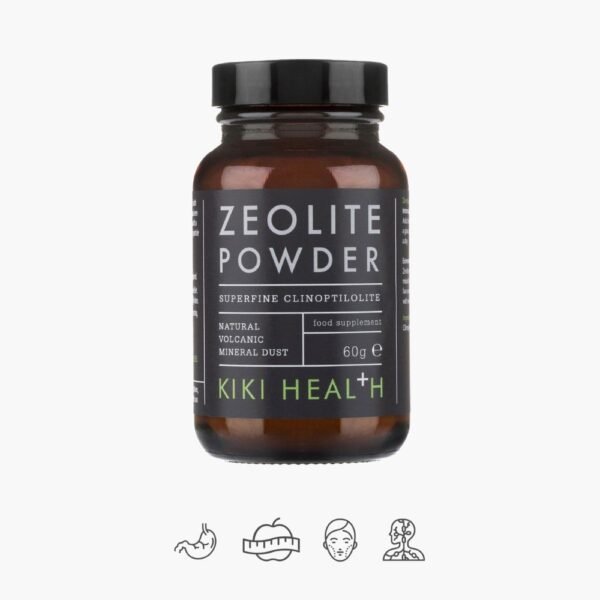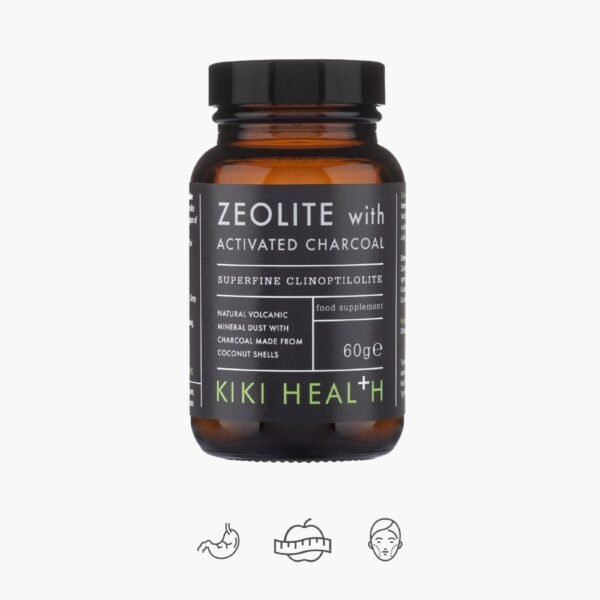The body needs to get enough, but not too much, vitamin D to function well. Vitamin D helps with bones and may help prevent some cancers. Symptoms of vitamin D deficiency can include muscle weakness, pain, fatigue and depression. In order to get enough vitamin D, it is important to make the right choice of certain foods, supplements and sun exposure.
What is vitamin D deficiency?
Vitamin D deficiency means that the body does not have enough vitamin D. Vitamin D is unique because the skin actually produces it using sunlight. Fair-skinned and younger people convert the sun into vitamin D much better than those with darker skin and those over 50.
Why is vitamin D so important?
Vitamin D is one of the many vitamins we need to stay healthy. This vitamin has many functions, including:
Strong bones: Having healthy bones prevents various diseases, including rickets. Rickets is a disorder that causes children to have weak and soft bones. It is caused by a lack of vitamin D in the body. Vitamin D is needed to use calcium and phosphorus for bone formation. In adults, having soft bones is a condition called osteomalacia.
Calcium Absorption: Vitamin D, along with calcium, helps build bones and keep bones strong and healthy. Weak bones can cause osteoporosis, loss of bone density, and fractures in the spine. Vitamin D, taken as a supplement or from exposure to sunlight, is converted into the active form of the vitamin. It is this active form that promotes optimal calcium absorption.
Working with parathyroid glands: The parathyroid glands work minute by minute to balance calcium levels in the blood by communicating with the kidneys, intestines, and skeleton. When the daily diet contains enough calcium and enough active vitamin D, dietary calcium is absorbed and used well throughout the body. If calcium intake is insufficient or vitamin D levels are low, the parathyroid glands will "borrow" calcium from the skeleton to maintain normal blood calcium levels.
What is the effect of vitamin D deficiency?
Adequate levels of vitamin D can also help keep the body healthy by protecting against and possibly helping to treat these diseases. This may include:
- Heart disease and high blood pressure
- Diabetes
- Infections and disorders of the immune system
- Some types of cancer, such as colon, prostate and breast cancer.
- Multiple sclerosis
Vitamin D is important for the immune system: The Best Nutrients for Immune Support (Part II)
High-quality vitamin D and other supplements for immunity:
What are the sources of vitamin D?
Treatment and prevention The goals of treatment and prevention of vitamin D deficiency are the same - to achieve and maintain adequate levels of vitamin D in the body. Your health care provider will tell you if you need to take or continue to take vitamin D supplements. If so, they will also tell you how much you should take. You may also want to consider:
You can get vitamin D in a number of ways. For example:
- Being outside in the sun. About 15-20 minutes three days a week is usually enough.
- From the food you eat.
- From quality food supplements
What are the signs and symptoms of vitamin D deficiency?
Severe vitamin D deficiency causes rickets, which manifests in children as growth failure, muscle weakness, bone pain, and joint deformities. This is very rare. However, children who are deficient in vitamin D may also have muscle weakness or painful muscles.
Vitamin D deficiency in adults is not so obvious. Signs and symptoms may include:
- Fatigue.
- Bone pain.
- Muscle weakness, muscle pain or muscle cramps.
- Mood changes similar to depression.
What does sunlight have to do with vitamin D?
Sunlight is good for health. Vitamin D is produced when the skin is exposed to sunlight, specifically the ultraviolet B (UV-B) rays emitted by the sun. The amount of vitamin D produced by the skin depends on factors such as:
- Seasonality: This factor depends somewhat on where one lives. In areas such as Northern Norway, OH UV-B light does not reach the ground for six months of the year due to the ozone layer and the solar zenith.
- Time of day: The sun's rays are strongest from 10 a.m. to 3 p.m.
- Cloud cover and air pollution.
- Places of residence: Cities near the equator have higher levels of ultraviolet (UV) light. It is the UV-B light in sunlight that causes the skin to produce vitamin D.
- The amount of melanin in the skin: Melanin is the brown-black pigment in the eyes, hair and skin. Melanin causes the skin to tan. The darker your skin, the more sun exposure you need to get enough vitamin D.
Daily diet and vitamin D deficiency
Vitamin D is not naturally found in many foods. This is why certain foods have added vitamin D. In fact, in some countries, newer food nutrition labels list the amount of vitamin D in a particular food.
It can be difficult, esp for vegans or lactose intolerant people to get enough vitamin D from their diet, so some people may choose to take quality supplements. It is always important to eat a variety of healthy foods from all food groups. The amount of vitamins in various foods is shown in this table.
| Food | vitamin D content in international units (IU) per serving |
| Cod liver oil, 1 tablespoon | 1360 |
| Salmon (boiled), 85 g | 447 |
| Tuna, canned in water, drained, 85 g | 154 |
| Orange juice enriched with vitamin D, 1 cup | 137 |
| Milk enriched with vitamins, 1 cup | 115 |
| Sardines, preserved in oil, drained, 2 sardines | 46 |
| Beef liver (boiled) 85 g | 42 |
| Egg yolk (large) | 41 |
How much vitamin D do you need?
For healthy people, the amount of vitamin D needed per day varies with age. The table below shows frequently used recommendations. It is important to know that these are general recommendations. A specialist may recommend higher or lower doses based on individual needs after evaluating the blood.
If you have osteoporosis, your doctor may test your vitamin D levels in your blood. The amount of vitamin D supplements can be adjusted for each individual depending on the results obtained. For many elderly patients, vitamin D supplements containing 800 to 2,000 IU per day may be safe and beneficial.
| Age | Recommended dietary allowance (IU/day) | Upper intake limit (IU/day) |
| 0 - 1 year | 400 | 1000 |
| 1-3 years | 600 | 2500 |
| 4 - 8 years | 600 | 3000 |
| 9 - 70 years | 600 | 4000 |
| Over 70 years old | 800 | 4000 |
What are the causes of vitamin D deficiency?
Vitamin D deficiency can be caused by specific health conditions such as:
- Cystic fibrosis, Crohn's disease or celiac disease: These diseases prevent the intestines from absorbing enough vitamin D when taking supplements.
- Weight loss surgery. Weight loss surgeries that reduce the size of the stomach and/or bypass part of the small intestine make it very difficult to get enough of certain nutrients, vitamins, and minerals.
- Obesity: A body mass index greater than 30 is associated with lower vitamin D levels. Fat cells keep vitamin D sequestered and do not release it. Vitamin D deficiency is more likely in obese people. Obesity often requires higher doses of vitamin D supplements to achieve and maintain normal D levels.
- Kidney and liver diseases: These diseases reduce the amount of an enzyme needed to convert vitamin D into a form that is used by the body. The lack of this enzyme leads to an insufficient amount of active vitamin D in the body.
Other factors determining vitamin D deficiency
- Age: The skin's ability to produce vitamin D decreases with age.
- Mobility: People who are indoors or rarely outside (for example, people in nursing homes and other facilities) cannot get vitamin D from sun exposure.
- Skin color: Dark skin is less able to produce vitamin D than light skin.
- Mother's milk: A woman's breast milk contains only small amounts of vitamin D. Often, infant formula also contains only small amounts of D. Babies are therefore at risk of not getting enough vitamin D. This is especially true for babies who are exclusively breastfed.
Can medications cause vitamin D deficiency?
This is how medications can affect vitamin D absorption:
- Laxatives
- Steroids (such as prednisone)
- Cholesterol-lowering drugs (such as cholestyramine and colestipol)
- Medications to control seizures (such as phenobarbital and phenytoin)
- Anti-tuberculosis drug (rifampin)
How is vitamin D deficiency treated?
The goals of treatment and prevention are the same - to achieve and maintain adequate levels of vitamin D in the body. While you can consider eating more foods that contain vitamin D and getting some sunlight, vitamin D supplements are the most commonly used.
Vitamin D comes in two forms: D2 and D3. D2, also called ergocalciferol, comes from plants. D3, also called cholecalciferol, comes from animals. D3 is widely available, it's just important to get quality and recommended by specialists. D3 is more easily absorbed than D2.
Is it possible to overdose on vitamin D?
Yes. It is possible to get too much vitamin D if supplements are overdone. Interestingly, you can't get too much vitamin D from the sun. Fortunately, vitamin D toxicity is relatively rare, but it can cause hypercalcemia and symptoms may include:
- Nausea.
- Increased thirst and urination.
- Poor appetite.
- Constipation.
- Weakness.
You should not take higher than recommended doses of vitamin D without first discussing it with a specialist. However, the doctor may recommend higher doses of vitamin D (if blood levels indicate that it is needed). Also, caution should be exercised when taking large doses of vitamin A together with vitamin D.
How to prevent vitamin D deficiency
The goal of vitamin D deficiency prevention is to achieve and maintain adequate levels of vitamin D in the body.
Worth considering:
Eat more foods that contain vitamin D: given in the table above. Keep in mind that foods alone usually don't meet the daily recommended amount of vitamin D.
Exposure to sunlight: it is not clear exactly how much sun exposure is needed. 10 to 15 minutes of sun exposure two to three times a week on your face, arms, legs, or back may be all you need to get the right amount of vitamin D. You may need more sunlight (especially in early spring and late fall) if:
- You are older
- You have a darker skin tone
- You live in a northern climate
When using sunscreen and standing outside a window, vitamin D is not released in the skin. However, it is worth remembering that too much sunlight increases the risk of skin cancer and causes aging of the skin. That's why taking the right vitamin D supplement is the solution many use.
It is important to rememberthat everyone's health is individual and there is no common recipe for everyone!
So, if you want to know what nutrients your body might be lacking right now, health professionals recommend a guide – "Your Day".
- In time, pay attention to the signals sent by your well-being
- Replenish the body with natural minerals, vitamins and nutrients necessary for health.
- Enjoy energy and good mood everyday!












One comment
Storm
Wow, great article! I had no idea that vitamin D deficiency could cause so many health problems.